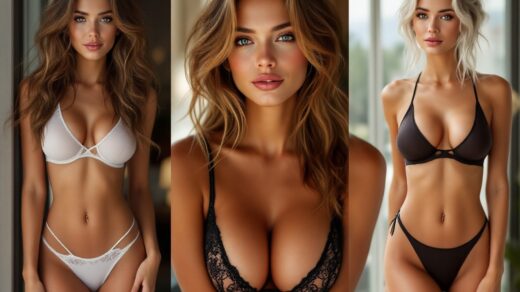As artificial intelligence continues to evolve, so does its capacity to craft increasingly realistic and provocative images, including nude depictions. One particular facet of this technology, known as AI nudify, has gained significant traction. This tool operates by transforming existing images, enabling creators to generate nude representations without the need for traditional photographs. However, the impact of such technology goes far beyond the eye-catching visuals it produces. It reshapes how we view consent, privacy, and the very essence of artistic expression. Consequently, navigating the legal implications of AI nude technology becomes not just a necessity but a critical responsibility.
The complex interplay of technology, artistry, and law reveals multiple layers to consider. As we venture deeper into understanding AI-generated nude imagery, it’s imperative to recognize the existing legal frameworks that govern this area. The landscape is fraught with challenges and uncertainties that demand careful examination from both legal and ethical perspectives. For creators and consumers alike, a balanced comprehension of these legalities is essential in fostering a safer and more responsible environment for digital expression. As such, the implications of this technology require not just understanding but also proactive engagement from all involved parties.
Understanding the Legal Framework

To grasp the complexities of AI nude technology, one must first familiarize themselves with the legal principles that surround it. Primarily, these principles involve copyright, consent, and personal representation laws. When discussing copyright issues, it’s crucial to differentiate between original works and those that are derived through AI processes, as this distinction significantly impacts ownership and rights. Moreover, privacy and consent play pivotal roles in ensuring that individuals are protected from unauthorized uses of their likeness, particularly in sensitive formats like nude imagery.
Copyright Issues
Copyright law is designed to protect original works from unauthorized reproduction and distribution. This protection includes written works, music, and visual art, but the introduction of AI-generated content challenges traditional notions of authorship. For AI nudify technologies, the question arises: who holds the copyright? Is it the programmer, the AI itself, or the user who generated the image? Understanding these nuances is essential for creators wishing to avoid legal pitfalls. Failing to navigate these issues might lead to costly legal battles and a tarnished reputation.
Privacy and Consent
Privacy concerns are at the forefront of discussions surrounding AI nude technology. When creating images that involve an individual’s likeness, explicit consent is paramount to adhere to privacy rights. State and federal laws may impose strict regulations regarding the use of someone’s image, especially in potentially compromising contexts. Depending on the jurisdiction, unauthorized use can result in significant legal consequences, including hefty fines. Additionally, the desire for consent extends to the ethical implications of using technology to alter images, raising questions about respect and personal boundaries.
Current Legal Precedents

Legal cases related to AI nude technology are still emerging, but several key rulings have already set important standards. These precedents help clarify legal interpretations and outline the boundaries of acceptable use. This evolving body of law reflects the growing recognition of the challenges posed by advanced technologies in creating nude content, so it is vital for creators to stay informed about the latest developments. Understanding how these legal decisions may influence future applications of AI nude technology can equip creators with the tools needed to navigate this challenging landscape.
| Case | Decision | Implication |
|---|---|---|
| Case A | Ruling on copyright ownership of AI-generated images | Clarifies who may hold copyright |
| Case B | Consent requirement upheld for likeness usage | Reinforces importance of obtaining consent |
| Case C | Defamation lawsuit success over AI-generated images | Sets precedent for misrepresentation claims |
Ethical Considerations
The fusion of AI technology and nude imagery raises critical ethical questions. Beyond legal ramifications, creators must consider the societal impact of their work. Art influences public perception, and AI-generated nude content can perpetuate harmful stereotypes or unrealistic expectations. To engage meaningfully with these issues, professionals in this field must adopt an ethical framework that prioritizes the well-being of individuals depicted in their work. Awareness of psychological effects, societal norms, and the power dynamics inherent in image creation is essential to fostering a responsible creative environment.
The societal impacts of AI nude technology warrant careful scrutiny as well. As these images proliferate, they can distort real perceptions of human bodies and contribute to body image issues among audiences, especially younger demographics. While the technology may offer the allure of artistic expression, it also poses risks of desensitization to the human form, leading people to view physicality through a narrowed lens. As creators, there’s a moral obligation to reflect on the messages conveyed through their art. Striking a balance between creativity and social responsibility is paramount.
Regulatory Frameworks
Various regulatory bodies are beginning to address the challenges posed by AI nude technology. Governments worldwide are contemplating new laws and guidelines that cater specifically to AI-generated content, aiming to protect individual rights and promote responsible artistic practices. While no singular regulatory framework exists, a multi-faceted approach involving copyright, privacy, and ethical considerations is developing. Stakeholders must engage with legislators, fostering dialogue that leads to comprehensive regulations guiding the responsible use of these technologies.
Conclusion
In conclusion, the legal implications surrounding AI nude technology present complex challenges that require thorough understanding and proactive management. From copyright laws to privacy rights, the intricacies of this field necessitate careful navigation. Creators must remain vigilant regarding legal precedents and regulatory changes while also acknowledging the ethical landscape associated with their work. By adopting a responsible approach and prioritizing ethical considerations, individuals can help shape a more secure and ethical future for AI-generated nude imagery. As this technology evolves, so too must our commitment to legality and ethics in artistic expression.
Frequently Asked Questions
- What is AI nude technology? AI nude technology refers to artificial intelligence applications designed to create or manipulate nude imagery, often raising ethical and legal challenges.
- What legal risks are associated with AI-generated nude content? Legal risks can include copyright infringement, violations of privacy rights, defamation, and potential lawsuits related to misrepresentation.
- Do I need consent to create AI nude images of someone? Yes, obtaining explicit consent is crucial to comply with privacy laws and avoid potential legal repercussions.
- Are there any regulations specifically addressing AI nude technology? While no specific legislation exclusively targets AI nude technology, existing copyright, privacy, and defamation laws may apply.
- How can I legally protect myself when using AI nude technology? Consulting with legal professionals, obtaining necessary consents, and being aware of copyright laws can help mitigate risks.


